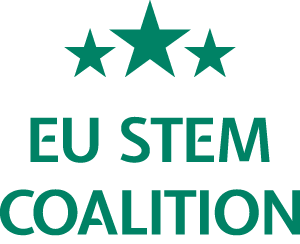ESTCube
Aug
13
2021
0
By admin
Aug
13
2021
ESTCube
By admin
Short summary:
ESTCube is a project that aims to increase uptake of space technology career paths by giving students an opportunity to apply their knowledge to real life satellite development. The project successfully launched two satellites, the first of which was the first satellite in the world that attempted to use an electric solar wind sail (e-sail).
Description and objectives:
ESTCube is a student satellite project and the first satellite in the world that attempted to use an electric solar wind sail (e-sail). The project aims to give students an opportunity to give their theoretical knowledge a practical output by building real-life satellites.
For every project, a team of engineers, mechanics, programmes and students is put together. With the team, a detailed plan and goals are set. For the ESTCube-1, the goal of the project was to successfully launch a student satellite. During the time in orbit, the satellite was actively used for taking images and downloading data, while students rapidly continued improving software for all subsystems. With this, the satellite was launched in 2013 and by 2014, the attitude determination and control system software reached its full functionality. In 2015, the batteries of the satellite got empty and the connection with the satellite ended.
Based on the good results from ESTCube-1, the activities continued with a new ESTCube-2 project in 2017. ESTCube-2 is a technology demonstration mission for deorbiting technology plasma break, the interplanetary propulsion system electric solar wind sail and advanced satellite subsystem solutions.
The ESTCube team is also participating in several bigger events and seminars. In addition to that, they also organize events that introduce the space technology and opportunities in the project. Every summer, the ESTCube Team is accepting summer traineeship members.
The main objective of the project is to promote space technology as a career path, by giving students an opportunity to gain practical knowledge about space technology and launch satellites that are made in Estonia. One of the goals is also to develop innovation in the field and put more emphasis in the field of research.
At the national level, the objective is to develop a research-based economy and use smart specialisation and launch more technology-based companies. Estonia faces a problem with the lack of engineers and technology developers in the near future. Therefore, it is important to bring more students to this career path.
Country:
Education level:
Link to programme website:
Logo or photo:

Impact:
The impact of the ESTCube is measured in the number of students participating in the project, but also the number of final thesis defended in the topics related to ESTCube. The biggest impact of the project is a fact that the team launched a real-life satellite in space in 2013 therefore making Estonia one of the so called ‘space countries’ in the world.
From the project, 14 research articles have been published and more than 50 research presentations have been made. From the project, 4 spin-off companies have been launched. More than 30 bachelor and over 20 master theses were defended related to the project The project had a great impact on the innovation and technology development in Estonia and generated international interest. This opened up possibilities for collaboration with different research institutions and companies that have since been developed.
Reach:
In the ESTCube project, there were about 200 students as participants who are directly involved in building the satellite. The peculiarity of the project was the amount of different nationalities in the team - all together there were students from more than 10 different countries, making it one of the most diverse student projects.
Moreover, ESTCube held a science camp in order to promote the opportunity to build a satellite for students. In addition, the ESTCube team has visited several science related events and seminars connected to the project.
Budget and funding model:
The project is funded by donations from companies, partners and people.
Year start:
2013
Status:
data_page_highlighted_yes_no:
data_page_summary:
ESTCube is a student satellite project and the first satellite in the world that attempted to use an electric solar wind sail (e-sail). The project aims to give students an opportunity to give their theoretical knowledge a practical output by building real-life satellites.
data_page_impact:
The ESTCube sparked 14 research articles, 50 research projects and 4 spin-off companies. More than 30 bachelor and over 20 master theses were defended related to the PROJECT.





